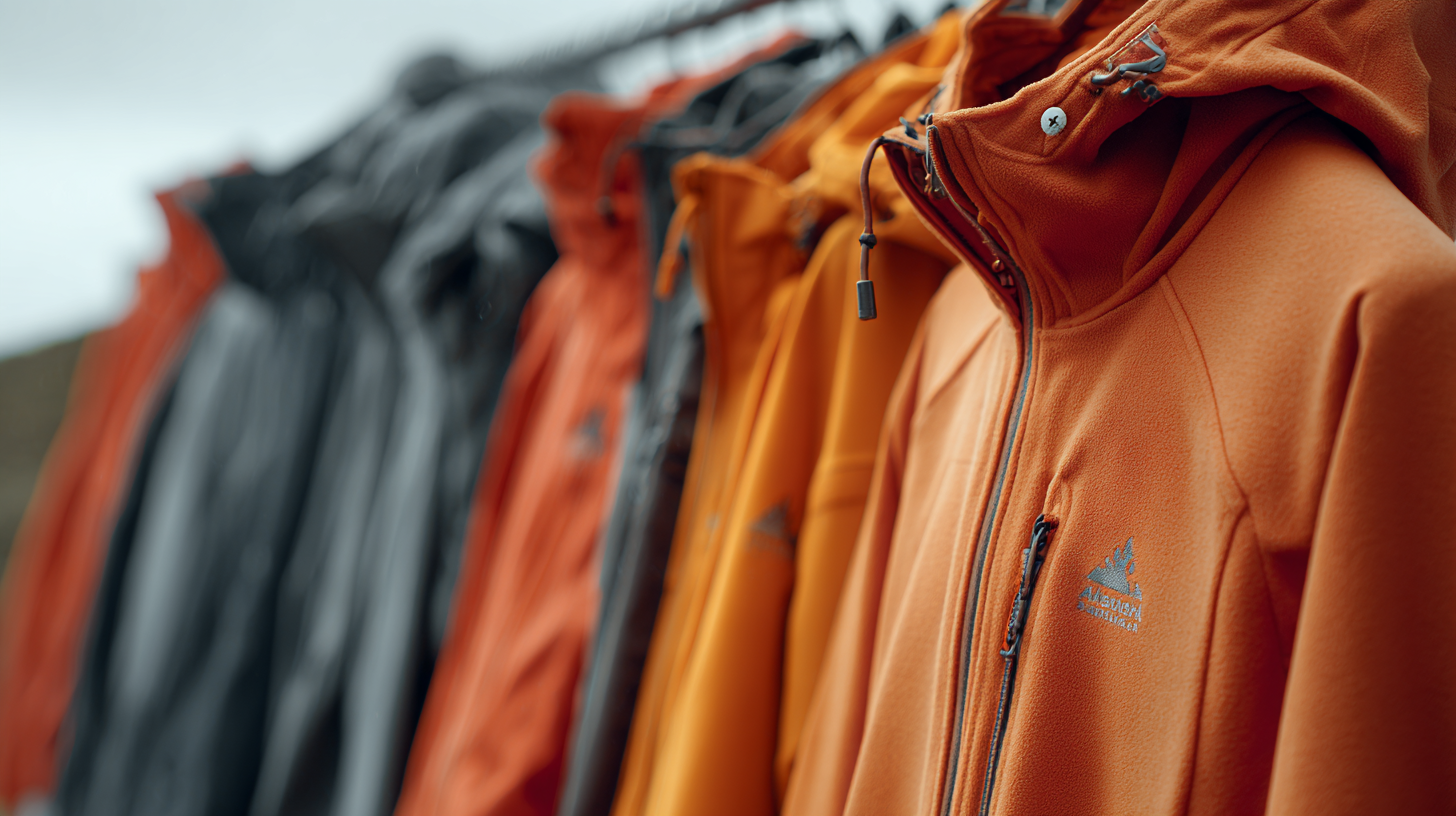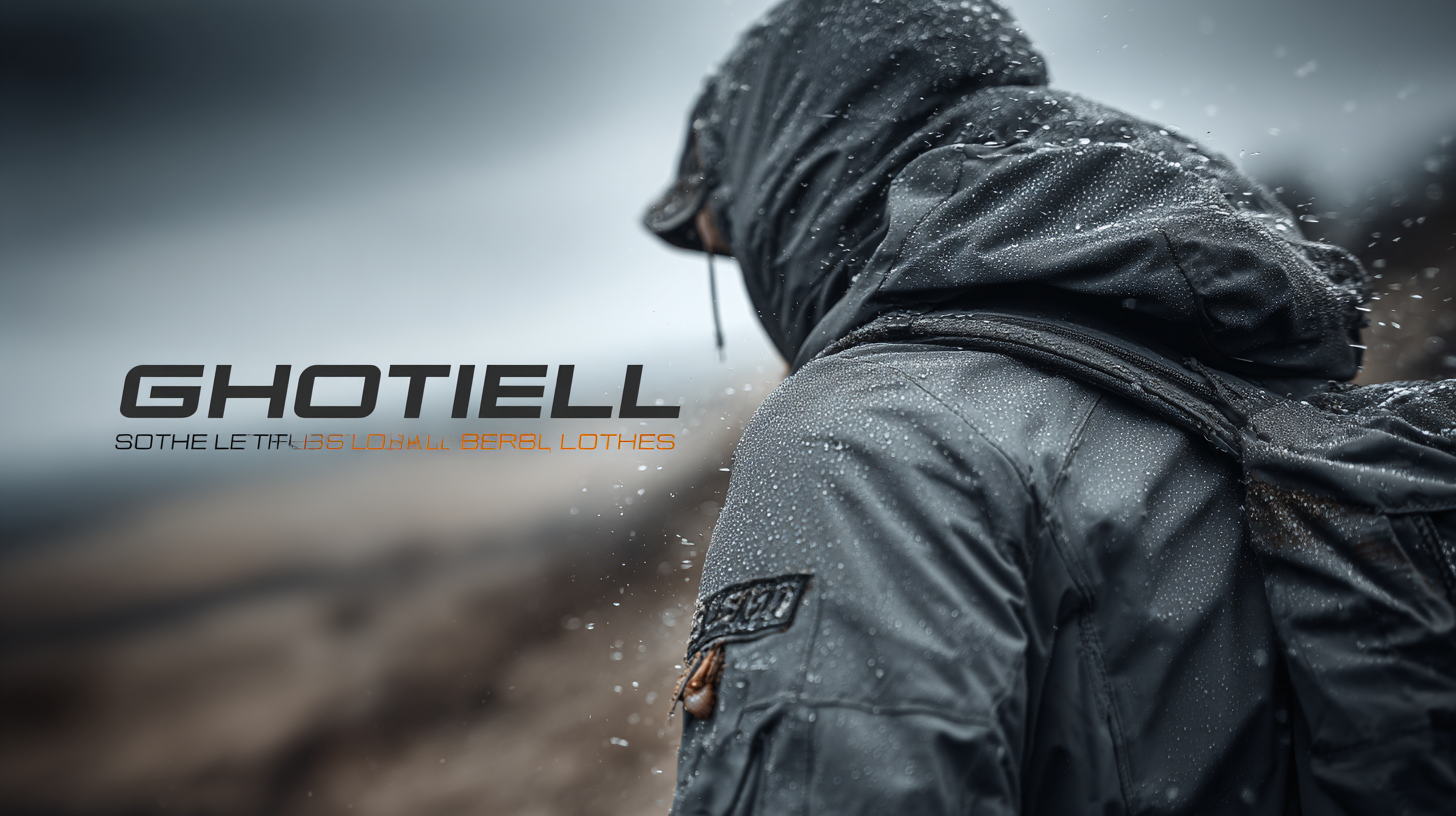
Explore the Best Alternatives to Softshell Clothing for Your Global Procurement Needs
In the ever-evolving world of outdoor apparel, Softshell Clothes have gained immense popularity for their versatility and comfort. According to a report by Grand View Research, the global outdoor apparel market is projected to reach USD 19.9 billion by 2025, with a significant portion attributed to the increasing demand for softshell and similar innovative clothing options. However, as businesses navigate global procurement needs, it's essential to explore viable alternatives that offer comparable benefits, such as breathability, flexibility, and weather resistance.

This blog delves into the top alternatives to softshell clothing and highlights their unique advantages, ensuring that companies make informed decisions that align with current trends in performance wear. By understanding these options, procurement professionals can better meet the diverse demands of consumers and enhance their product offerings.
Understanding Softshell Clothing: Features and Limitations
Softshell clothing is designed to offer flexibility and comfort in various outdoor conditions. Characterized by its stretchable fabric and breathable nature, it incorporates windproof and water-repellent properties, making it a popular choice for active individuals. However, while softshell garments excel in mild to moderately cold conditions, they can fall short under extreme weather, such as heavy rain or snow. When choosing softshell clothing, it’s essential to consider these limitations, as they may not provide adequate warmth or insulation in harsh climates.
**Tip:** When sourcing alternatives, seek out materials such as hardshell jackets or insulated layers that can provide enhanced protection against severe elements. Each option has distinct features; for instance, hardshell garments are more suitable for heavy rain while thermal layers can significantly improve warmth.
It's also important to evaluate the intended use. For high-performance activities like climbing or skiing, lightweight and packable options may be necessary. Fabrics that incorporate technology for moisture-wicking could also enhance comfort, ensuring that you stay dry and warm throughout your adventures.
**Tip:** Always prioritize durability when exploring alternatives. Look for well-constructed seams and robust materials that withstand wear and tear, especially for long-term use during extensive outdoor excursions.
Explore the Best Alternatives to Softshell Clothing for Your Global Procurement Needs
| Alternative Clothing Type | Features | Limitations | Ideal Usage Conditions |
|---|---|---|---|
| Fleece Jackets | Warm, lightweight, good insulation properties | Less effective against wind and water | Cold, dry environments |
| Rain Jackets | Waterproof, lightweight, often breathable | May not insulate well in cold weather | Wet conditions, moderate temperatures |
| Insulated Shells | Combines insulation with weather resistance | Bulkier and heavier | Cold, wet environments |
| Tactical Jackets | Durable, multi-pocketed, often weather-resistant | Can be rigid or heavier than casual wear | Fieldwork, outdoor activities |
| Hybrid Jackets | Combines features of softshell and hardshell | Can be expensive, complex materials | Versatile, varying conditions |
Key Alternatives to Softshell: Materials and Benefits
When it comes to global procurement, softshell clothing has been a popular choice for its versatility and comfort. However, there are several compelling alternatives that provide unique benefits while still meeting performance requirements. One notable option is fleece, known for its lightweight warmth and excellent breathability. Fleece garments are perfect for layering and are often made from recycled materials, contributing to a more sustainable clothing line. Additionally, they offer moisture-wicking properties, making them suitable for active environments.

Another excellent alternative is nylon-based fabric, which is renowned for its durability and resistance to abrasions. This material is ideal for outdoor gear and workwear, ensuring long-lasting performance even in tough conditions. With a water-resistant finish, nylon clothing can provide protection against unpredictable weather, making it an essential choice for those involved in global procurement. Furthermore, blends that incorporate spandex offer stretch and flexibility, catering to active users who require freedom of movement without sacrificing comfort.
Ultimately, these alternatives to softshell clothing open up new avenues for procurement strategies focused on performance and sustainability.
Performance Comparison: Softshell vs. Alternative Fabrics
When it comes to outdoor and activewear, softshell fabrics are popular for their balance of flexibility and protection. However, alternative fabrics can offer unique benefits depending on your global procurement needs. For instance, polyester and nylon blends can be lightweight and quick-drying, making them ideal for wet conditions, while merino wool excels in temperature regulation and moisture-wicking properties.
Tip: Always consider the specific environment and activities your clothing will be used for. If your focus is on everyday wear and style, check out technical cotton blends that provide comfort without sacrificing durability. On the other hand, if you're considering high-intensity adventures, investigate breathable and stretchable fabrics like spandex-infused materials, which enhance mobility.
Moreover, while comparing performance, it's crucial to assess the fabric's insulation, water resistance, and breathability. For example, while softshells provide a certain level of wind resistance, many lightweight alternatives can outperform them in breathability. Tip: Test samples in various conditions to find the fabric that best meets your needs, and don’t hesitate to inquire about sustainable options that align with your brand values.
Sustainable Sourcing: Eco-Friendly Alternatives to Softshell
As sustainability becomes increasingly critical in the apparel industry, businesses are actively seeking eco-friendly alternatives to traditional softshell clothing. Conventional softshell materials often contain synthetic fibers like polyester, which contribute to environmental pollution and resource depletion. According to a report by the Ellen MacArthur Foundation, the fashion industry is responsible for producing over 92 million tons of waste annually, with a significant portion stemming from non-biodegradable textiles. Therefore, transitioning to sustainable materials is imperative for brands focused on reducing their ecological footprint.
Eco-friendly alternatives include fabrics made from organic cotton, recycled polyester, and innovative materials such as Tencel, derived from sustainably sourced wood pulp. These options not only mitigate environmental impact but also offer similar durability and performance characteristics as conventional softshell fabrics. The Global Sustainability Report indicates that the market for sustainable fashion is expected to surpass $8 trillion by 2025, highlighting the growing demand for responsibly sourced materials. By prioritizing sustainable sourcing, companies not only align with consumer preferences but also contribute to a more circular economy, ultimately shaping a greener future for the textile industry.

Global Procurement Strategies for Alternative Clothing Solutions
When considering global procurement strategies for alternative clothing solutions to softshell clothing, it’s essential to assess the growing demand for sustainable and multifunctional materials. According to a report by Statista, the global outdoor apparel market is projected to reach approximately $20 billion by 2025, highlighting a significant shift towards eco-friendly alternatives. Companies are increasingly focusing on sourcing materials that not only provide comfort and performance but also minimize environmental impact.
Sustainable fabrics such as recycled polyester, organic cotton, and bamboo are gaining traction among manufacturers and consumers alike. A recent study by Market Research Future indicates that the demand for sustainable fabrics is expected to grow by over 9% annually from 2021 to 2027. This trend underscores the necessity for procurement professionals to adapt their strategies, emphasizing the importance of supplier transparency and ethical sourcing practices. By aligning procurement strategies with these emerging trends, organizations can enhance their brand reputation while meeting the diverse needs of their global clientele.
